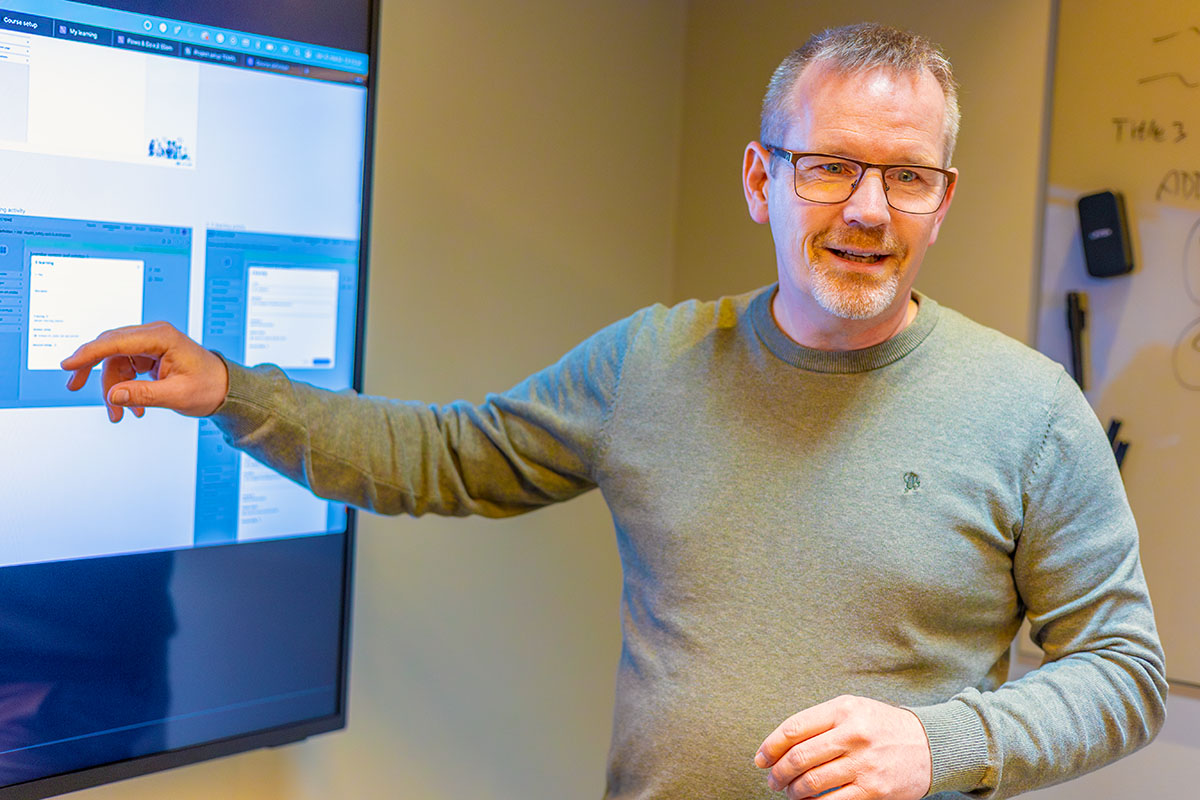
An HR system provides an overview of employees and automates time-consuming and complex processes. This makes everyday life easier for the HR department, but for the HR system to function as desired, it needs to be easy to use and understand. So how do you design something as comprehensive as an HR system?
We had a chat with the leader of the UX team at CatalystOne, Odd Fagerheim, to find out more.

Odd Fagerheim, head of UX and product design at CatalystOne.
What is UX-design?
-Hi Odd! Tell us a little about yourself and your role at CatalystOne.
-I am head of product design, which consists of five UX designers. My role is to ensure we run good design processes, create a holistic design solution, and of course, that everyone on the team is doing well, motivated, and heading in the same direction. I have been with CatalystOne for five and a half years, but I have twenty years of experience in the field.
-So, how does one design a HR system?
-To design a good HR system, you must first understand the challenges that such a system should solve and for whom. This requires thorough research to capture all user needs, and this is where I see many in the industry being careless.
-Once these activities are completed, we start the actual design process in Figma (a collaborative interface design tool), which results in a prototype that we then validate with real users. This is not only to verify that we are actually addressing the user's challenge, but also to ensure that what we create is intuitive and easy to use.
-Once this process is completed, the developers start coding what the Product Managers and UX have decided on. After a few development sprints, we launch the new functionality that adds value to our users.

You have to discuss big and small details to understand the customers needs .
-What exactly is UX-design?
-UX is an abbreviation for user experience. People often confuse UX with UI design. UI stands for user interface and deals with how the system looks. It can be the shape and color of a button or the appearance of an input box. UX design, on the other hand, is about the overall experience a user has with a system and the process of creating that experience.
-Why is UX design important and how does good UX-design support an HR-system?
-There are many factors that contribute to the total value of a good user experience. Meeting user needs, having an easy-to-use solution, building user trust, and having an appealing visuals are some of the most important elements.
-A good design process will always work towards optimising these factors, resulting in a positive user experience with the system.
-The fact that users experience these important factors in an HR system not only benefits the users but is also crucial for the business. It's true for both the customers themselves and for us as a provider. Satisfied customers stay with a provider longer than dissatisfied ones. That's just how it is.
-At CatalystOne, we want to create a product that our users love, which is why we take UX design seriously. We have strengthened both the number of UX designers and product managers recently and will increase resources further going forward.

The UX department at CatalystOne: Christina Bø, Jacqueline Lømsland Carroza, Odd Fagerheim, and Mari Simensen.
-What does a day in the life of the UX- team look like?
-The daily routine for a UX designer is varied. It ranges from creative processes at a high level, involving various parts of the organisation, to detailed pixel-perfect drawings.
-Since our task is to create something users love, we need to have contact with those who will eventually use it. This means interaction and involvement with customers, which is always rewarding as their input provides great value and a lot of positive energy.
-Collaboration among us UX designers is also an important part of our daily routine. With our openness to ideas/input and our genuine desire to create something of value, we have a wonderful drive.
-Working in UX is simply fun!
Cooperation with customers

Odd focuses on user journeys to understand where the pain lies with customers.
-How involved are customers when changes are made?
-When we create new functionality or make changes to existing ones, we always aim to gain insight into what the problem is really about. We always want to validate hypotheses with possible solutions to have them verified or disproven. Therefore, customer involvement is incredibly important to us.
-Hvor much does customer engagement matter when you work on UX?
-It is very rewarding to meet our engaged customers, and the input we receive from them is crucial to creating valuable solutions.
-I believe it is unique among HCM providers of our size to involve customers as we do. We consider ourselves completely dependent on good interaction with them in terms of user insight and validation, and we receive feedback that it is important to have a provider who does just that. Our goal is to create a product that customers love, and to achieve this, we need good involvement with them.
Forward-thinking product organisation

Everyday life for the UX team at CatalystOne is about creating something that users love.
-What does the future hold for CatalystOne and our customers??
-We are working on incredibly exciting things right now, and we have a very forward-thinking product organisation that will deliver a lot of user value in the future. And I'm not just saying that because I'm part of CatalystOne, it's "almost" entirely objective!
-Thanks for taking the time to talk to us. We know you have a very busy schedule.
-It's completely fine. It's not often that we who work with UX get to spread our message. Welcome back any time!

